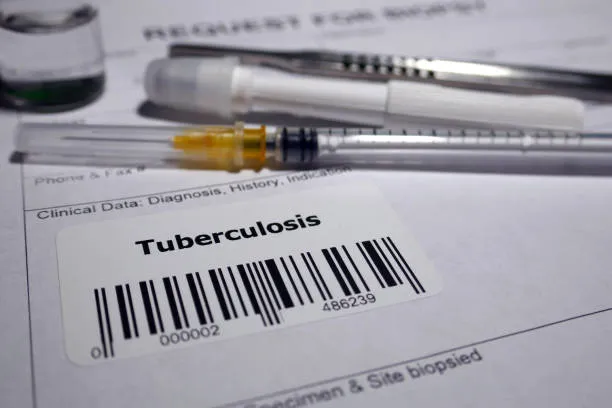Tuberculosis (TB) is an infectious disease that is caused by bacteria and can be fatal if left untreated. It is a major global health concern and is one of the leading causes of death worldwide. TB is caused by a type of bacteria called Mycobacterium tuberculosis, which is spread through the air when a person with active TB coughs, sneezes, or speaks. Understanding the causes, symptoms, prevention, and treatment of TB is essential in order to fight and control the spread of this disease. TB is usually curable and preventable, but it can be hard to detect. It is important to know the facts about TB, its causes, symptoms, prevention, and treatment so that you can protect yourself and your loved ones.
What is Tuberculosis?
TB is a bacterial infection that can affect any part of your body, but most often targets your lungs. It is spread through the air when a person with active TB coughs, sneezes, or speaks. Once inside a person’s body, TB bacteria can stay in their system for months or years without any symptoms. This is called latent TB because it is inactive and not causing any harm to the person. Sometimes, though, the bacteria become active again, causing symptoms like a cough that won’t go away, pain in your chest or shoulder, weight loss, feeling tired, or a fever. If the bacteria spread outside your lungs and into your lymph nodes, you may develop an area of swelling in your neck called a node (or nodes if there are multiple nodes that are swollen).
Causes of Tuberculosis
Tuberculosis is caused by a bacterial infection that damages tissues in the lungs. The bacteria are spread through the air when a person with active TB coughs, sneezes, or speaks. Tuberculosis bacteria can also be transmitted from person to person via infected liquids, such as saliva, blood, sputum (mucus from the lungs), or urine. It is possible to be infected with the bacteria and not show any symptoms for months or years. There are two types of TB bacteria:
Symptoms of Tuberculosis
If you have TB, you may experience any of the following symptoms:
Prevention of Tuberculosis
The best way to prevent tuberculosis is to avoid people who have the disease. If you are in contact with people who have tuberculosis and you are not infected with the disease, you should take steps to prevent infection. The steps you take depend on how close you are to the person with tuberculosis. If you are in a room with a person who has tuberculosis and you are at least three feet away from that person, you are considered to be at a distance that will not put you at risk of getting infected. If you are closer than three feet to that person, you would need to take additional steps to prevent infection. If you are in a room with a person who has tuberculosis and you are less than three feet away from that person, you need to take special precautions to prevent infection. The kind of precautions you need to take depend on the type of infection control measures that are in place in the room where the person with tuberculosis is staying. If the person with tuberculosis is being treated, you can take infection control measures and avoid contact with the person as described for people who have infectious TB disease.
Diagnosis of Tuberculosis
Although TB is curable, it is important to get an accurate diagnosis of the disease so that you can be treated quickly. An accurate diagnosis is especially important if you have been in close contact with someone who has TB. The first step to diagnosing TB is to rule out other health conditions that have similar symptoms, including infections like respiratory viruses or other bacterial infections. When you go to see your doctor, he or she will begin with a physical examination. The doctor may also take your temperature, take a blood sample, and/or order imaging tests, such as a CT scan, chest X-ray, or MRI. People with TB bacteria in their blood may also be given a special TB test called a TB blood test. The test is usually given when someone who is being treated for TB has a positive result on the sputum smear.
Treatment of Tuberculosis
If you are diagnosed with TB, you will be prescribed a combination of antibiotics for a certain period of time. Depending on the severity of your condition and the type of bacteria causing the infection, a doctor may prescribe six months of antibiotics or even longer. You may also need to take other medications, including pain relievers and supplements to address nutritional deficiencies.

Complications of Tuberculosis
Long-term Effects of Tuberculosis
How to Reduce the Risk of Contracting Tuberculosis
Conclusion
Tuberculosis is a bacterial infection that can affect any part of your body, but often targets your lungs. It is spread through the air when a person with active TB coughs, sneezes, or speaks. Once inside a person’s body, TB bacteria can stay in their system for months or years without any symptoms. This is called latent TB because it is inactive and not causing any harm to the person. Sometimes, though, the bacteria become active again, causing symptoms like a cough that won’t go away, weight loss, feeling tired, or a fever. If the bacteria spread outside your lungs and into your lymph nodes, you may develop an area of swelling in your neck called a node (or nodes if there are multiple nodes that are swollen).
Reference:
https://www.nhs.uk/conditions/tuberculosis-tb/#:~:text=Tuberculosis%20
https://www.mayoclinic.org/diseases-conditions/tuberculosis/symptoms-causes/syc-20351250
https://en.m.wikipedia.org/wiki/Tuberculosis